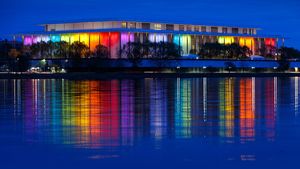National Asian and Pacific Islander HIV/AIDS Awareness Day (NAPIHAAD) takes place on May 19, serving as a vital reminder of the ongoing efforts to combat HIV stigma and promote prevention and treatment within Asian, Native Hawaiian, and Pacific Islander communities.
According to data from 2020, Asian, Native Hawaiian, and Pacific Islander individuals accounted for 2.3 percent (700 cases) of all new HIV diagnoses in the United States. The total number of Asian, Native Hawaiian, and Pacific Islander individuals living with HIV in the country stands at 17,034.
However, these communities exhibit lower rates of HIV testing compared to the general population, with only 24 percent of Asian individuals and 36 percent of Native Hawaiian/Pacific Islander individuals reporting having been tested for HIV. This is notably lower than the national average of 39 percent.
The negative health outcomes related to HIV experienced by Asian, Native Hawaiian, and Pacific Islander communities can be attributed to various factors, including stigma and language barriers. To effectively address these issues, it is crucial to adopt culturally competent and sensitive approaches that take into account the unique experiences and needs of these communities.
To gain a deeper understanding of how the HIV epidemic impacts Asian, Native Hawaiian, and Pacific Islander individuals, it is recommended to explore available resources; the National Queer Asian Pacific Islander Alliance is a good place to start. Local data profiles can provide insights into HIV/AIDS among these populations in specific areas.
Raising awareness plays a vital role in combating HIV stigma and promoting prevention. By sharing information that highlights the impact of HIV on Asian, Native Hawaiian, and Pacific Islander communities, individuals can contribute to this important cause and help disseminate crucial information to their networks.












































































